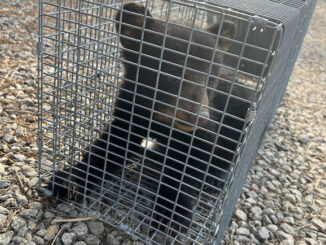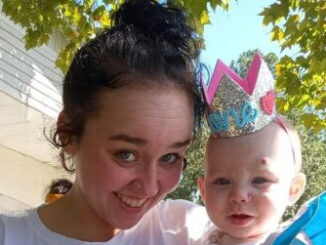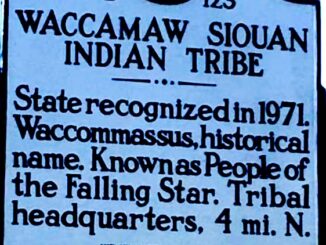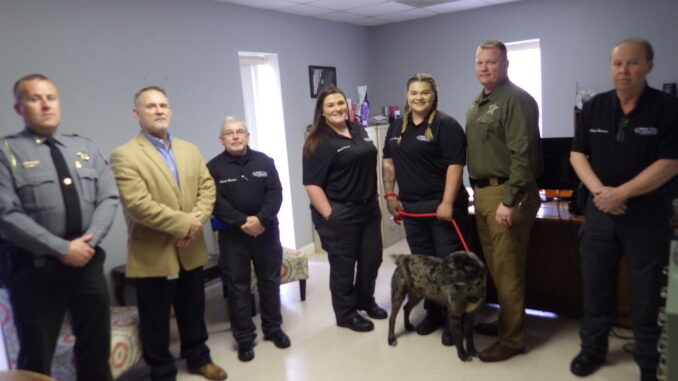
Additional changes underway at troubled facility
Sheriff Jody Greene said bluntly that euthanasia rates will likely rise at the Columbus animal shelter, unless adoptions pick up.
“It’s regrettable,” he said, “but we have to get a handle on where these animals are going before we can just turn them loose. I hate it. We don’t want to see it happen. But some animals, especially feral cats, cannot be safely adopted out.”
At the same time, it is becoming easier for individuals who want to adopt a new pet to get their choice, Greene said. When Greene took over the shelter, he said some animals were being placed on hold for weeks for animal rescue groups. Individuals who wanted to adopt dogs and cats seen on the shelter social media pages run by volunteers were often told the animals were not available.
“After the mandatory holding period, from now on,” Greene said, “it’s first come first served.”
Families looking to add a furry friend will soon have a less-stressful way to meet prospective new pets. Visitors to the shelter will meet dogs and cats in a new waiting area with a big screen television, Greene said.

The television will have a slideshow of available animals in the kennel area, Greene said. Potential adopters can then ask an attendant about the specific dog or cat, and the animal will be brought to the secure waiting area.
The room will have more of the feel of a living room than an animal shelter.
“Back there in the kennel area,” Greene said, “it’s noisy, the animals get excited, and it’s just not safe for the people or the pets.
“Before this, a dog or cat could slip away in the hallway and run out the front door. Now there will be a better, calmer place to meet your new pets.”
Columbus County claimed to have one of the lowest kill rates in the state in recent years, with rescue groups reportedly receiving most of the dogs and adoptable cats. Residents have complained that a volunteer at the shelter actively prevented local adoptions of animals.
Last fall, a series of requests for exact numbers of animals adopted by individuals or passed on to rescues was not answered by the shelter. How much money, if any, that the shelter received in adoption fees from rescues was also not disclosed.
A change in the makeup of the county commissioners, as well as the resignation of the county manager, led to numerous complaints about the shelter coming to light. Greene was named interim director of Animal Control earlier this month. Director Loretta Shipman is on extended medical leave, and commissioners voted to place Greene in charge of the department in her absence. They also decided to make Animal Control the Animal Protective Services (APS) division of the sheriff’s office.
In the first few days, Greene said, he was faced with financial irregularities, sanitation issues at the shelter, and problems with the building. He immediately contacted state officials who are assisting in revamping the shelter and its operations, a process that will likely take several months. Other improvements at the shelter will be detailed in a future story.
A major issue, Greene said, was the question of how much money was collected in adoption fees, and what happened to that money.
“There are a lot of unanswered questions we are still working on,” Greene said.
The APS also has adopted a new fee schedule for adoptions. If a dog is reclaimed by its owner within five days, there is no charge is the dog has a current rabies vaccination, and $33.25 if proof of a rabies shot cannot be supplied.
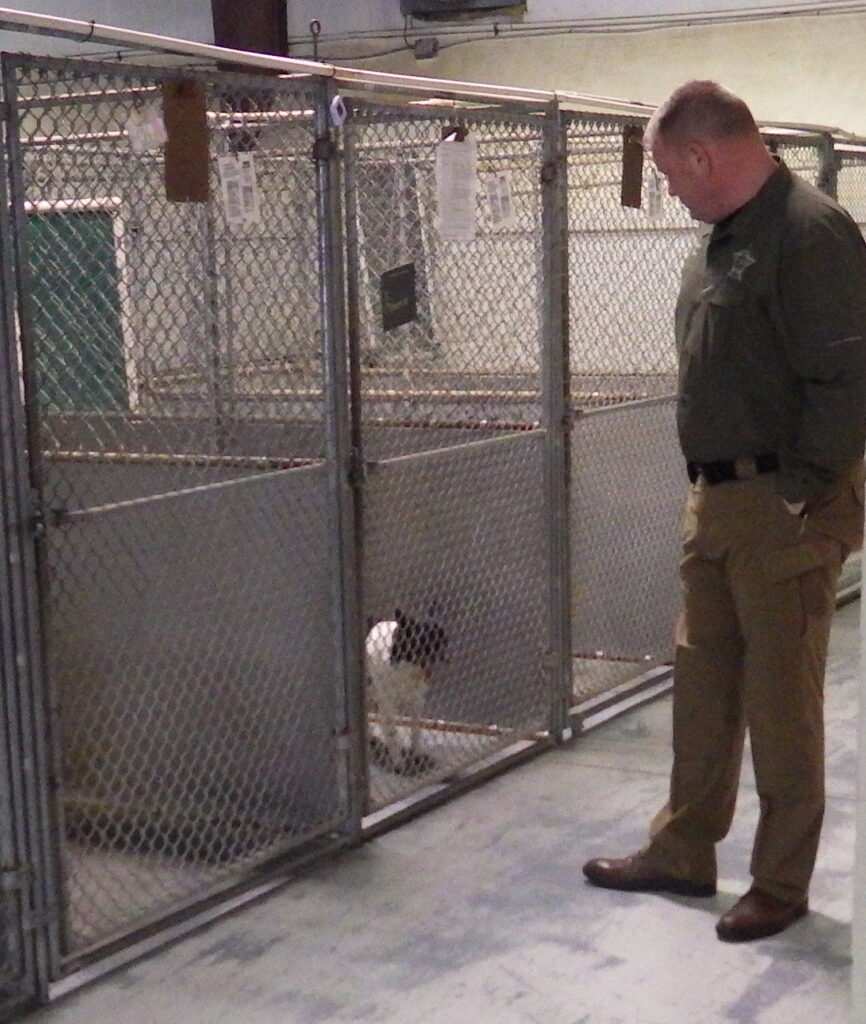
After the five-day hold, adopting a dog is $135. Rescues will pay $45 for a dog that has been sterilized, and $25 if the rescue is spaying or neutering the dog.
For adoptable cats, the fees are $25 if spayed and neutered, $60 for intact females and $40 for intact males. Rescues will pay $10 per cat.
Greene has come under fire from a cat rescue group for breaking ties with the group.
The sheriff’s office broke the shelter’s ties with a group called Urgent Feral and Semi Feral Cats of CCAC the day after the change in command. The group has several different branches under the name Adoptable Cats of the CCAC, all of which are coordinated through Facebook. Penelope Ashenhurst, a British citizen who funded some of the groups, lambasted Greene and the CCSO online for the changes.
Ashenhurst said she was notified in a telephone call from Lt. Justin Worley, who is over APS, that her group would no longer be asked to assist with cat adoptions.
The group claims to be the only such organization in any shelter in the country that rescues every feral cat. Ashenhurst said in the post that her group has provided playpen-style crates for the adoptable cat room, medications, and carriers, among other supplies.
She criticized Worley and Greene for immediately shutting down the volunteer-managed social media, which she said was a major resource for donations and adoptions.
“Since that call (from Worley) shelter staff have been told not to use social media,” the Facebook post reads, “not to communicate with this page and the shelter FB page has been removed…
“They DO NOT realise (yet?) how useful Facebook has been for finding rescue for the animals in a shelter over the past ELEVEN YEARS that otherwise gets no support..and they have just swept hat (sic) away with ‘We no longer require your services’,” the post read.
Around the same time the post was made, CCAPS set up new social media pages managed by APS staff, featuring adoptable animals at the shelter. The page helped reunite a Brunswick County woman with her dog earlier this week. Adoptable animals are featured on the page every day, along with other information from the shelter and APS.
How many animals are adopted each year, either to individuals or rescue groups, has been a thorny issue for several years.
Shelter Manager Loretta Shipman, who is on extended medical leave, told commissioners last year that the Columbus facility has the lowest euthanasia rate in the state. Requests for detailed figures from 2019 and partial figures for 2020 were not honored or acknowledged. State law requires that each animal have its own file number, and the information on. The intake sheet, including final disposition of each animal, be available as a public record. Complete records have not been available at the Columbus shelter for several years.
The 2018 Public Animal Shelter Report from the N.C. Department of Agriculture is the most complete set of data currently available from the state. The numbers include records of dogs and cats (and in some cases, other animals) taken in, adopted out, and euthanized.
Shelter operations numbers are also not consistent from county to county. Some include personnel costs, while others provide veterinary care and other expenses that change the per-animal cost.
The report says that the Columbus shelter adopted out 1,134 dogs and 1,095 cats that year, with a total of 115 pets being returned to owners. The shelter reported euthanizing 24 dogs and 72 cats. The report says the shelter had operating costs of $259,400 that year, and a per-animal handling cost of $100. No other intakes were reported.
By comparison, Bladen County reported handling 1,138 dogs, 1,100 cats, one goat, three chickens, two pigs and two bats. Of the domestic animals, 61 dogs were euthanized, along with 495 cats. Adoptions included 848 dogs and 543 cats, with 198 dogs and ten cats returned to owners. Bladen’s operating budget was $265,533.58 in 2018, with a cost per animal of $118.23.
Duplin County saw 1,796 dogs, with 213 returned to owners and 132 euthanized. Cats totaled 1,327 taken in, 475 adopted out, 23 returned to owners and 713 destroyed. Duplin also handled 26 rabbits, three racoons, 12 horses, 25 pigs, 30 chickens and two turtles. That shelter’s budget was $313,744, with a per animal cost of $95.65.
Pender County saw 1,532 dogs taken in, 832 adopted out, 468 returned to owners and 213 euthanized. Cats totaled 1,710 brought into the shelter, 863 adopted outr, 54 returned to owners and 742 euthanized. Pender also saw 122 animals of other species. That shelter’s operations cost $446,832.04, with a cost per animal of $132.83.
Robeson County listed 3,407 dogs and 1,371 cats brought into the shelter, with 351 dogs adopted and 59 cats going to new homes. Owners claimed 158 dogs and six cats. Robeson euthanized 1,667 dogs and 1,826 cats. That shelter’s operating costs were $535,855.52, with a per animal cost of $11.94.
Sampson County listed 1,360 dogs and 748 cats coming through the shelter in 2018. Of those, 815 dogs and 237 cats were adopted out, 93 and 11 (respectively) were returned to their owners, and 445 dogs with 497 cats euthanized. That shelter’s operating costs were $155,082. A per animal breakdown was not listed.
Check back with z2j.c7e.myftpupload.com for more developments on this story.



